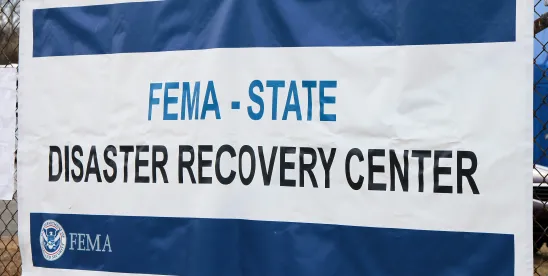The devastating floods that struck Texas in July provide an example of how emergency management and intergovernmental coordination operate under extreme conditions. As torrential rainfall triggered catastrophic flooding across multiple counties beginning on July 2, the response highlighted disaster response systems at the county, state, and federal levels.
The emergency response began at the state level with proactive measures, marked by warnings to state emergency response teams to be prepared. On July 2, the Texas Division of Emergency Management (TDEM) activated state emergency response resources in anticipation of increased flooding threats in parts of West and Central Texas. As conditions worsened, TDEM escalated its response on July 3, increasing the readiness level of the Texas State Emergency Operations Center to Level II (escalated response) and activating additional state emergency response resources as portions of West and Central Texas prepared for continued heavy rainfall and potential flash flooding.
As conditions rapidly deteriorated across Central Texas, Gov. Greg Abbott exercised his emergency powers under Texas law. The governor, by executive order or proclamation, may declare a state of disaster if the governor finds a disaster has occurred or that the occurrence or threat of disaster is imminent. This authority, codified in Texas Government Code Section 418.014, was exercised by Gov. Abbott on July 4 and July 5.
Under Section 418.017, he authorized the use of all available state and local government resources reasonably necessary to manage the disaster. The proclamation also suspends statutes and rules that could hinder emergency contracting or procurement, enabling state agencies to respond quickly to protect life or property. This broad authority allows for rapid policy adjustments and resource deployment during emergency situations.
Recognizing that the disaster exceeded state capabilities, Gov. Abbott requested federal support. The process for obtaining federal disaster assistance follows specific statutory requirements under the Robert T. Stafford Disaster Relief and Emergency Assistance Act, 42 U.S.C. 5121 et seq. (the Stafford Act). The Stafford Act constitutes the statutory authority for most federal disaster response activities as they pertain to the Federal Emergency Management Agency (FEMA) and FEMA programs. The governor of the affected state must request from the president a declaration that a “major disaster” exists, and the president must find that “the disaster is of such severity and magnitude that effective response is beyond the capabilities of the State and the affected local governments and that Federal assistance is necessary.” Stafford Act § 401.
Under this framework and in response to Gov. Abbott’s July 4 disaster declaration and request for federal support, President Donald Trump declared a “major disaster” and issued a federal disaster declaration on July 6, allowing for FEMA disaster assistance and FEMA damage assessments in Kerr County. A “major disaster” is defined as any natural catastrophe—such as a hurricane, a tornado, a storm, a flood, an earthquake, or similar event—or any fire, flood, or explosion, regardless of cause, that the president determines causes damage of “sufficient severity and magnitude to warrant major disaster assistance under this Act” to support state, local, and disaster relief efforts. Stafford Act § 102. The federal government subsequently updated the presidential disaster declaration to include additional counties eligible for FEMA disaster assistance.
The July 2025 Texas floods illustrate how intergovernmental coordination and a multilayered approach are applied in emergency management.




 />i
/>i
